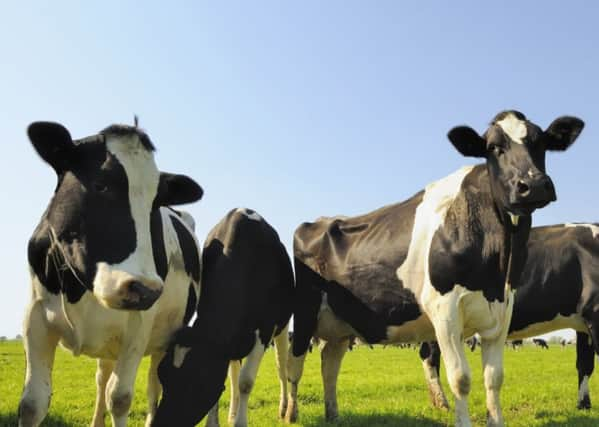Why wait? - Considering voluntary waiting period


The voluntary waiting period is important because it is a significant proportion of the overall time between calvings and is completely within the control of dairy managers.
The length of the voluntary waiting period is important as it can influence first service conception rates, control lactation length and could in some instances protect failures of overall reproductive performance. On many herds the voluntary waiting program is around 50 days in milk, but it varies from herd to herd according to the breeding strategy each farm adopts. Many vary for a number of reasons including whether the farm relies more on synchronisation programs to control first service, or varies timing by lactation number, breed or even season of the year.
Advertisement
Hide AdAdvertisement
Hide AdIn some herds where improving submission rates or conception rates have proved difficult, an “easy” procedure has been considered to shorten the voluntary waiting period to allow cows more opportunities to become pregnant. Where reproductive performance is suboptimal, dairy managers find it difficult to not inseminate cows before the end of the voluntary waiting period because they are afraid the cow may not be detected the next time she comes into oestrus.
However the voluntary waiting period allows cow’s uterine tract to recover from the previous calving, including healing, elimination of uterine debris, overcome or eliminate bacterial infections, involute and return to state of ovarian cyclicity. Therefore breeding too soon can impair first service conception rates, on average a minimum of 40 days post calving is therefore often used.
Short voluntary waiting periods will allow some cows to conceive earlier after calving which may help to improve some measures of reproductive performance, such as calving interval, however shortening the voluntary waiting period in itself is not likely to “fix” reproductive problems on a dairy. In this instance greater return will be made by understanding and relieving the limitations to reproductive efficiency. Common examples include cow comfort and poor herd mobility, limitations on dry matter intake, sub optimal oestrous detection methods or excessive body condition loss Addressing these “bottlenecks” on farm rather than worrying about the difference of a 42 day or 50 days voluntary waiting period will result in greater returns for the farm.
Conceiving early in lactation may also be problematic in that cows may need to be dried off when milk yield is relatively high. However lengthening the voluntary waiting period excessively or risking a greater proportion of cows receiving their first insemination after 100 days in milk may also result in poorer farm performance as extended lactations can result in extending periods between peak and profitable milk production.
Advertisement
Hide AdAdvertisement
Hide AdTherefore the ideal voluntary waiting period is a fine balance between breeding as soon as possible after calving and waiting long enough to ensure good conception results.
Herds with exceptional submission rates may be able to have longer voluntary waiting periods compared to herds with lower submission rates. Similarly herds with very high conception rates may afford delaying time to 1st insemination, however it has been suggested that for every 10 days of delay in time to 1st insemination herds will need to improve conception rates by 6-8%. Some herds that engage in 100% synchronisation to control timing of first insemination will have longer voluntary waiting periods and depend on exceptional conception rates to their reproductive program. In these herds adherence to the synchronisation program is imperative to result in conception rates that justify extension of the voluntary waiting period, which may be 70-80 days in milk. Some herds have moved to 100% synchronisation programs during periods of heat stress to compensate for lower behavioural oestrus.
In summary working with your breeding team, vet and nutritionist to understand your current reproductive performance will provide insight as to whether you should consider changing your voluntary waiting period. Great reproductive performance offers opportunities to fine tune timing of first inseminations based on parity and season etc to optimise herd profitability and predicting changes through computer modelling is now easily accessible.
However if your submission rates and conception rates are suboptimal, work to set voluntary waiting period such as 50 days post calving, and address the bigger management issues holding your herd back, they are likely to have greater benefits to your dairy enterprise.